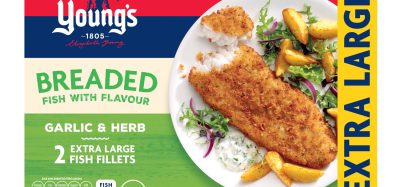How novel technologies can help you to use clean label colours
- Like
- Digg
- Del
- Tumblr
- VKontakte
- Buffer
- Love This
- Odnoklassniki
- Meneame
- Blogger
- Amazon
- Yahoo Mail
- Gmail
- AOL
- Newsvine
- HackerNews
- Evernote
- MySpace
- Mail.ru
- Viadeo
- Line
- Comments
- Yummly
- SMS
- Viber
- Telegram
- Subscribe
- Skype
- Facebook Messenger
- Kakao
- LiveJournal
- Yammer
- Edgar
- Fintel
- Mix
- Instapaper
- Copy Link
Posted: 26 April 2013 | Colette Jermann, Department of Food Manufacturing Technologies, Campden BRI | No comments yet
The trend for clean label products has been growing since the 1980s. In 2007, the well-known University of Southampton study linked certain artificial colours (tartrazine, quinoline yellow, sunset yellow, carmoisine, ponceau 4R and allura red) and the preservative benzoate to hyperactivity and attention deficit disorders in children. Since then, interest in alternative colours has grown quickly in the UK and has started to expand to the rest of Europe, mainly to Scandinavian countries. In response to this, UK retailers have started to replace artificial colours in their products. Manufacturers are now replacing them, if possible, with plant pigments. The claims ‘no additives’ and/or ‘no preservatives’ were the most popular claims made between January 2008 and June 2009 and is still a popular claim now. The trend is still growing and is seen as a mark of authenticity and simplicity.
The trend for clean label products has been growing since the 1980s. In 2007, the well-known University of Southampton study linked certain artificial colours (tartrazine, quinoline yellow, sunset yellow, carmoisine, ponceau 4R and allura red) and the preservative benzoate to hyperactivity and attention deficit disorders in children. Since then, interest in alternative colours has grown quickly in the UK and has started to expand to the rest of Europe, mainly to Scandinavian countries. In response to this, UK retailers have started to replace artificial colours in their products. Manufacturers are now replacing them, if possible, with plant pigments. The claims ‘no additives’ and/or ‘no preservatives’ were the most popular claims made between January 2008 and June 2009 and is still a popular claim now. The trend is still growing and is seen as a mark of authenticity and simplicity.
The trend for clean label products has been growing since the 1980s. In 2007, the well-known University of Southampton study linked certain artificial colours (tartrazine, quinoline yellow, sunset yellow, carmoisine, ponceau 4R and allura red) and the preservative benzoate to hyperactivity and attention deficit disorders in children. Since then, interest in alternative colours has grown quickly in the UK and has started to expand to the rest of Europe, mainly to Scandinavian countries. In response to this, UK retailers have started to replace artificial colours in their products. Manufacturers are now replacing them, if possible, with plant pigments. The claims ‘no additives’ and/or ‘no preservatives’ were the most popular claims made between January 2008 and June 2009 and is still a popular claim now. The trend is still growing and is seen as a mark of authenticity and simplicity.









